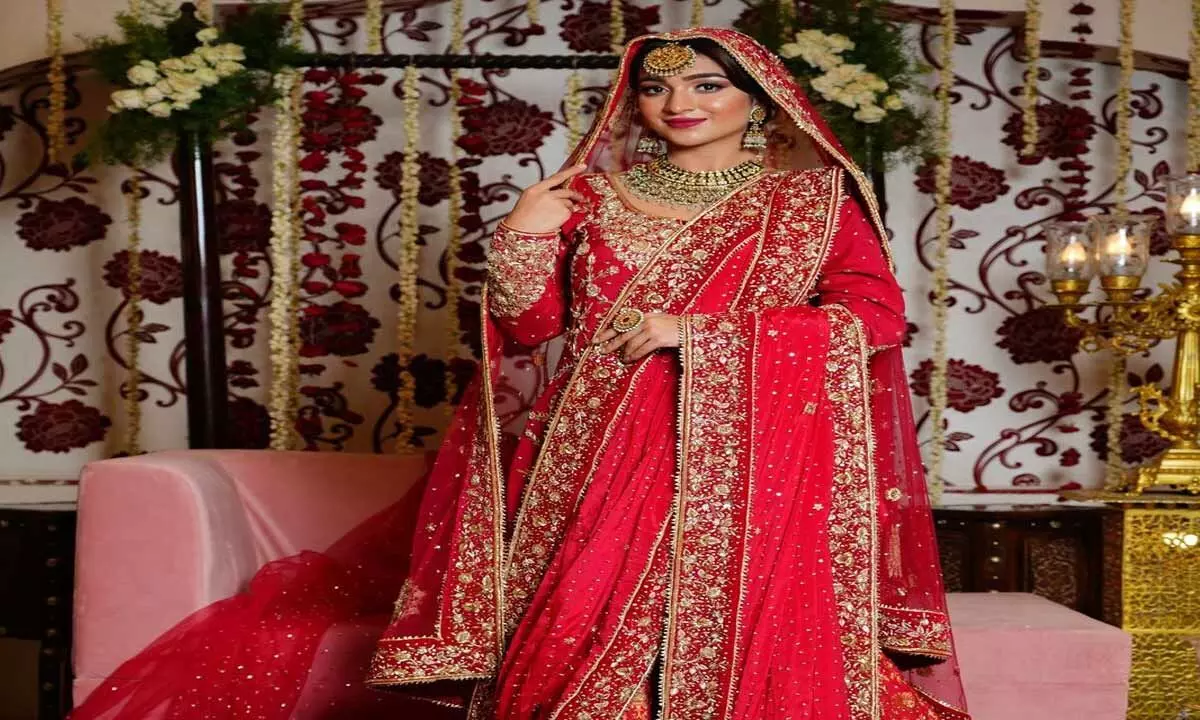Exploring the significance of the Khada Dupatta

Khada Dupatta is a significant component of traditional bridal attire in Indian weddings. It is a long, embellished fabric that is draped over the bride’s head and covers her shoulders, extending down to her feet.
Khada Dupatta is a significant component of traditional bridal attire in Indian weddings. It is a long, embellished fabric that is draped over the bride’s head and covers her shoulders, extending down to her feet. This article explores the significance of the Khada Dupatta in traditional Indian weddings and provides some pointers on its importance and styling. Aaliya Deeba, founder of Ideebs London, a Couture Label shares with the significance of the Khada Dupatta in traditional Indian weddings and provides some pointers on its importance and styling.
Cultural Symbolism: The Khada Dupatta holds immense cultural symbolism in Indian weddings. It represents the bride’s modesty, elegance, and grace. It is a symbol of purity and is believed to bring blessings and good luck to the bride.
Regional Variations: Different regions in India have their unique styles of draping the Khada Dupatta. For example, in North India, it is draped over the head and pinned to the shoulder, while in South India, it is draped around the waist and worn over the head.
Embellishments and Fabrics: The Khada Dupatta is typically made of luxurious fabrics like silk, chiffon, or georgette. It is heavily adorned with intricate embroidery, sequins, beads, or zari work. The embellishments add opulence and grandeur to the bridal ensemble said Aaliya Deeba, founder of Ideebs London, a Couture Label.
Colour Symbolism: The colour of the Khada Dupatta holds significance in Indian weddings. Red is the most commonly used color as it symbolizes love, fertility, and prosperity. However, brides today also experiment with other colors like pink, maroon, gold, and pastel shades to match their wedding attire.
Draping Styles: The draping style of the Khada Dupatta can vary based on the bride’s preference and regional customs. It can be draped over the head and pinned to the shoulder, pleated and worn like a sari pallu, or wrapped around the waist and worn over the head.
Bridal Veil: The Khada Dupatta also serves as a bridal veil, concealing the bride’s face during certain rituals, such as the exchange of garlands or the arrival of the groom. It adds an aura of mystery and anticipation to the bride’s appearance.
Bridal Entry: The Khada Dupatta is often used during the bride’s entry into the wedding venue. It is held up by family members or bridesmaids to create a beautiful archway under which the bride walks, symbolizing her transition from a girl to a married woman.
Styling Tips: To style the Khada Dupatta, it is important to ensure it complements the bridal attire. Coordinate the color and embellishments of the Khada Dupatta with the bridal gharara or sharara. Proper pinning and draping techniques are crucial to keep the dupatta in place throughout the wedding ceremonies.
Personalization: While traditional designs and colors are popular, modern brides often personalize their Khada Dupatta. They may incorporate their initials, wedding date, or meaningful symbols through embroidery or custom motifs to make it unique and special.
Khada Dupatta plays a significant role in traditional Indian weddings. It symbolizes cultural values, adds elegance to the bride’s ensemble, and enhances the overall beauty of the wedding ceremony. By understanding its significance and following appropriate styling tips, brides can embrace this timeless tradition and make it their own.














